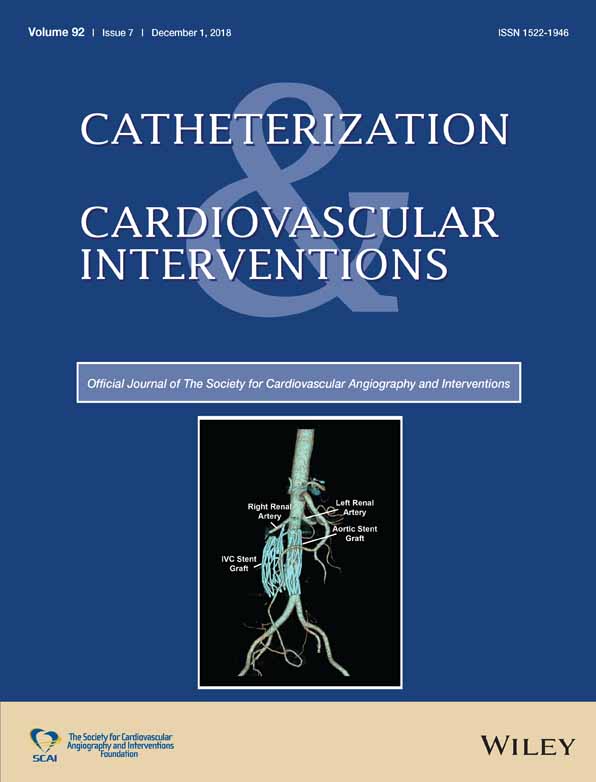Premounted stents for branch pulmonary artery stenosis in children: A short term solution
Abstract
Objective
Define outcomes of premounted stent implantation (PMS) for branch pulmonary artery stenosis (BPAS).
Background
PMS for BPAS in children raises concern of long term viability, with limited maximal expansion.
Methods
We reviewed our cardiac database over an 11-year period ending in 2013. Primary endpoint was need for surgical stent intervention (SSI). Other endpoints included acute results and repeat interventions (RI).
Results
82 PMS were implanted in 60 children for BPAS. Median weight was 6.3 (25th-75th 4.6–9.8) kg. Median stent diameter was 6 (range 4–9) mm. Acutely, vessel diameter improved from 2.0 (25th-75th 1.6–3.4) to 5.0 (25th-75th 4.2–5.9) mm (p < 0.001), pressure gradient decreased from 41 (25th-75th 29–50) to 11 (25th-75th 7–18) mmHg (n = 47, p < 0.001), RV:Ao pressure ratio decreased from 100% (25th-75th 85–110%) to 59% (25th-75th 49–74%) (n = 40, p < 0.001). Freedom from SSI was 81% at 1 year and 35% at 5 years. Freedom from RI was 50% at 1 year and 14% at 5 years. 86% of PMS underwent SSI during a concomitant planned cardiac surgery. 45% patients had stent redilation, improving stent diameter from 4.6 (25th-75th 4.1–5.4) to 5.7 (25th-75th 4.9–7) mm (p < 0.001). 1 stent (3%) was able to be fractured longitudinally.
Conclusions
PMS is an effective short term solution for BPAS in children. PMS is associated with expected early need for transcatheter reintervention to accommodate for growth, but also has high rates of SSI.
CONFLICT OF INTEREST
None




